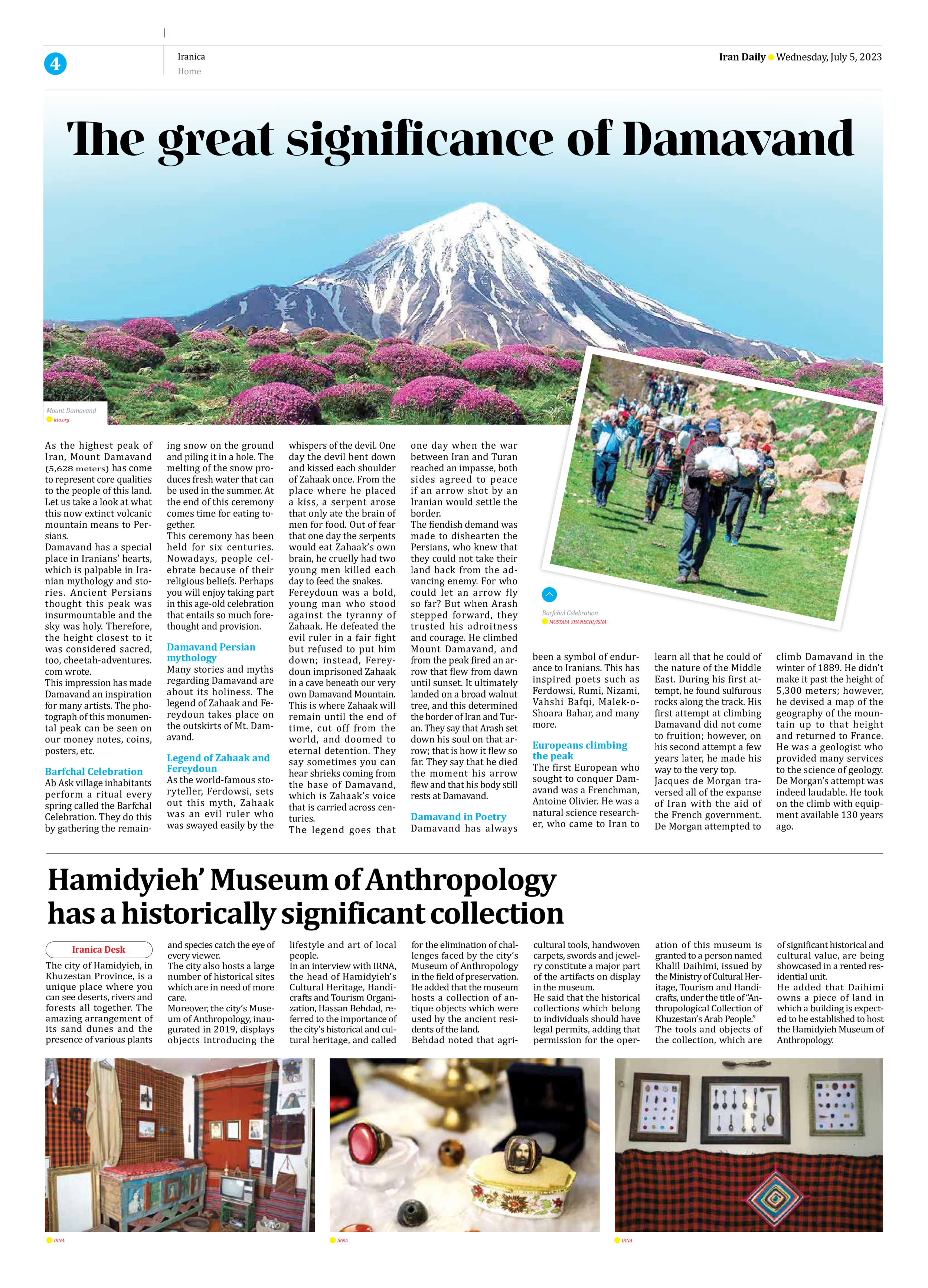
The great significance of Damavand
As the highest peak of Iran, Mount Damavand (5,628 meters) has come to represent core qualities to the people of this land. Let us take a look at what this now extinct volcanic mountain means to Persians.
Damavand has a special place in Iranians’ hearts, which is palpable in Iranian mythology and stories. Ancient Persians thought this peak was insurmountable and the sky was holy. Therefore, the height closest to it was considered sacred, too, cheetah-adventures.com wrote.
This impression has made Damavand an inspiration for many artists. The photograph of this monumental peak can be seen on our money notes, coins, posters, etc.
Barfchal Celebration
Ab Ask village inhabitants perform a ritual every spring called the Barfchal Celebration. They do this by gathering the remaining snow on the ground and piling it in a hole. The melting of the snow produces fresh water that can be used in the summer. At the end of this ceremony comes time for eating together.
This ceremony has been held for six centuries. Nowadays, people celebrate because of their religious beliefs. Perhaps you will enjoy taking part in this age-old celebration that entails so much forethought and provision.
Damavand Persian mythology
Many stories and myths regarding Damavand are about its holiness. The legend of Zahaak and Fereydoun takes place on the outskirts of Mt. Damavand.
Legend of Zahaak and Fereydoun
As the world-famous storyteller, Ferdowsi, sets out this myth, Zahaak was an evil ruler who was swayed easily by the whispers of the devil. One day the devil bent down and kissed each shoulder of Zahaak once. From the place where he placed a kiss, a serpent arose that only ate the brain of men for food. Out of fear that one day the serpents would eat Zahaak’s own brain, he cruelly had two young men killed each day to feed the snakes.
Fereydoun was a bold, young man who stood against the tyranny of Zahaak. He defeated the evil ruler in a fair fight but refused to put him down; instead, Fereydoun imprisoned Zahaak in a cave beneath our very own Damavand Mountain. This is where Zahaak will remain until the end of time, cut off from the world, and doomed to eternal detention. They say sometimes you can hear shrieks coming from the base of Damavand, which is Zahaak’s voice that is carried across centuries.
The legend goes that one day when the war between Iran and Turan reached an impasse, both sides agreed to peace if an arrow shot by an Iranian would settle the border.
The fiendish demand was made to dishearten the Persians, who knew that they could not take their land back from the advancing enemy. For who could let an arrow fly so far? But when Arash stepped forward, they trusted his adroitness and courage. He climbed Mount Damavand, and from the peak fired an arrow that flew from dawn until sunset. It ultimately landed on a broad walnut tree, and this determined the border of Iran and Turan. They say that Arash set down his soul on that arrow; that is how it flew so far. They say that he died the moment his arrow flew and that his body still rests at Damavand.
Damavand in Poetry
Damavand has always been a symbol of endurance to Iranians. This has inspired poets such as Ferdowsi, Rumi, Nizami, Vahshi Bafqi, Malek-o-Shoara Bahar, and many more.
Europeans climbing the peak
The first European who sought to conquer Damavand was a Frenchman, Antoine Olivier. He was a natural science researcher, who came to Iran to learn all that he could of the nature of the Middle East. During his first attempt, he found sulfurous rocks along the track. His first attempt at climbing Damavand did not come to fruition; however, on his second attempt a few years later, he made his way to the very top.
Jacques de Morgan traversed all of the expanse of Iran with the aid of the French government. De Morgan attempted to climb Damavand in the winter of 1889. He didn’t make it past the height of 5,300 meters; however, he devised a map of the geography of the mountain up to that height and returned to France. He was a geologist who provided many services to the science of geology. De Morgan’s attempt was indeed laudable. He took on the climb with equipment available 130 years ago.







